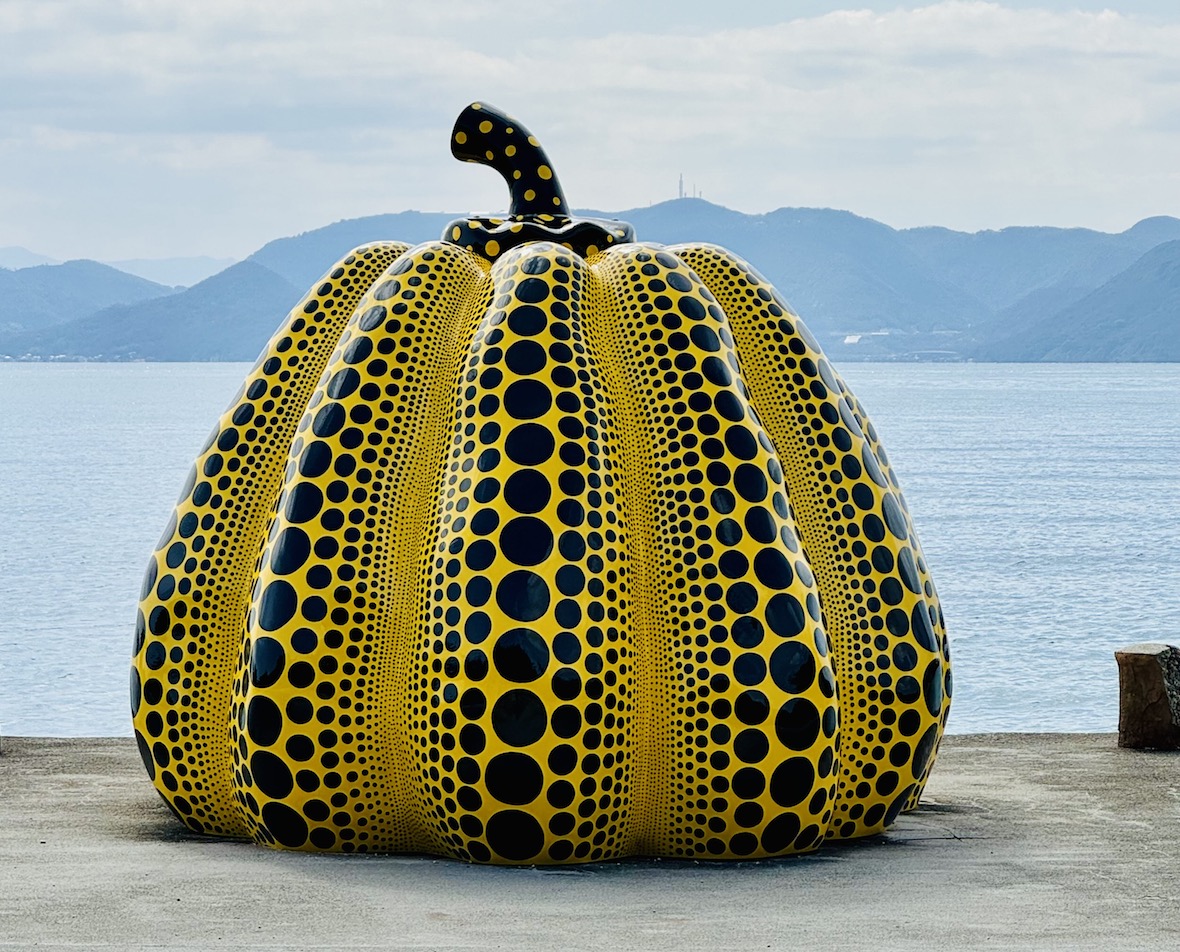For a long time, I’ve been fascinated by Naoshima, a small island in Japan’s Seto Inland Sea. Renowned for its contemporary art scene, this quaint island has undergone a remarkable metamorphosis, evolving into a global destination that celebrates the fusion of art, architecture, and nature.
During my four-day trip there, I immersed myself in the island’s artistic atmosphere, staying in a traditional Japanese house filled with art books.
Upon setting foot on Naoshima, one is immediately struck by the profound transformation of a community of merely 3,000 people into a veritable mecca for art pilgrims from across the globe. Naoshima’s seamless integration of art with its natural surroundings sets it apart. It has grown organically over time, guided not by a rigid master plan but by a harmonious dialogue with nature, architecture and art.
The story of Naoshima’s art scene started in 1988, when Soichiro Fukutake, the head of the Benesse Corporation, decided to bring more life to the island. Working with famous architect Tadao Ando, Fukutake created major museums like the iconic Benesse House in 1992 and the sublime Chichu Museum in 2004.
More than a Museum, The Chichu Museum is almost like a temple to Art. Built underground to respect the island’s natural landscape, it is the reinterpretation by the renowned Japanese architect of the artworks of three and only three artists: Claude Monet, James Turrell and Walter de Maria. On arrival, the docent, all dressed in white, asked me to take off my shoes to enter the Claude Monet room, where the white mosaic of the floor and the dim natural light from the ceiling created a very religious atmosphere. I read later that Soichiro Fukutake wanted the Water Lily painting by Claude Monet to be the central work at Chichu Museum.
“First, I thought of what to do with the Monets. In the 21st century, we need something that transcends religion. I thought the Monet could be an icon for the 21st century to replace religious thoughts. I thought of building a museum centred on Monet, and rather than having a religious icon such as a cross as the focus of the building, I decided to use the Monet as something that transcends religion.”
Then, he talked with Walter de Maria and James Turrell about the project, and they agreed.

Further down the road, the Lee Ufan Museum is a unique tribute to the minimalist Korean artist whose large outdoor sculptures blend so well with the surroundings.
Yayoi Kusama is celebrated with her iconic pumpinks and her kinetic installation Narcissus Garden, made of 1,700 stainless-steel mirror balls, which she exhibited at the Venice Biennale in 1966 in the Valley Gallery designed by Tadao Ando, which opened in spring 2022.
Among the highlights of my journey was the day spent in Teshima, which was 20 minutes by boat from Naoshima.
The Teshima Museum is extraordinary and unlike any other place I have experienced. Designed by architect Ryue Nishizawa, the structure consists of a single, large concrete shell with an elliptical opening in the roof, allowing natural light and rain to enter the space. Inside, there is only one work by artist Rei Naito. I did not quite understand when I first stepped inside, after having changed my shoes for the museum slippers, what type of artwork to expect and worst, I could not see it. I entered the open, cavernous space devoid of pillars or walls with two major openings to the sky and the forest surrounding it and then I saw it: water. “Matrix”, the name of the work, is an incredible ephemeral, organic and forever-changing sculpture of water…I stayed a long time in a totally contemplative state, filled with joy and wonder. It reminded me of the epiphany I had in 2008 when I visited Richard Serra’s Monumenta, a Japanese garden promenade, in Le Grand Palais.
In a tiny bay on Teshima, I visited Christian Boltansky’s “Les Archives du Cœur.” I registered my heartbeat, which was a strange experience as I realised I had never heard it before. The simple sound of my heartbeat made me think about how fragile life is.

Returning to Naoshima, in the historic village of Honmura, I explored the Art House Project that seamlessly intertwines contemporary art, architecture, and local history. Works by artists such as James Turrell, Hiroshi Sugimoto, and Miyajima breathe new life into centuries-old dwellings, offering visitors a poignant glimpse into the intersection of art and heritage. Initially feeling claustrophobic in James Turrell’s pitch-black house, I was encouraged by the docent to stay. As colours slowly appeared, I no longer feared the void. The experience forced me to slow down and fully appreciate the transformative journey, providing food for thought.
As I said goodbye to Naoshima, I reflected on other places I had visited, such as the Guggenheim Museum in Bilbao or Fondation Luma in Arles, which have transformed a territory thanks to Art. The Seto Islands, once plagued by industrial pollution and waste, have undergone a true metamorphosis, thanks to the vision of an art philanthropist, into an act of resilience.
Grateful and enchanted, I departed Naoshima, carrying indelible memories of a transcendent artistic journey.
Words and photos Virginie Syn ©Artlyst 2024

